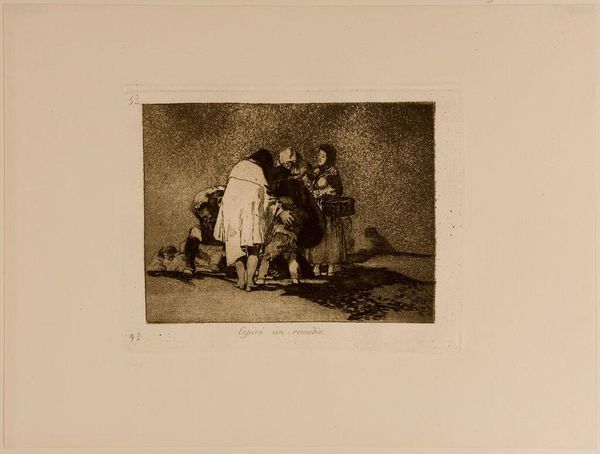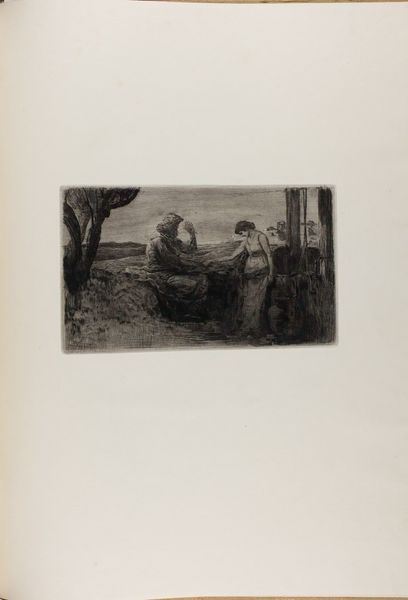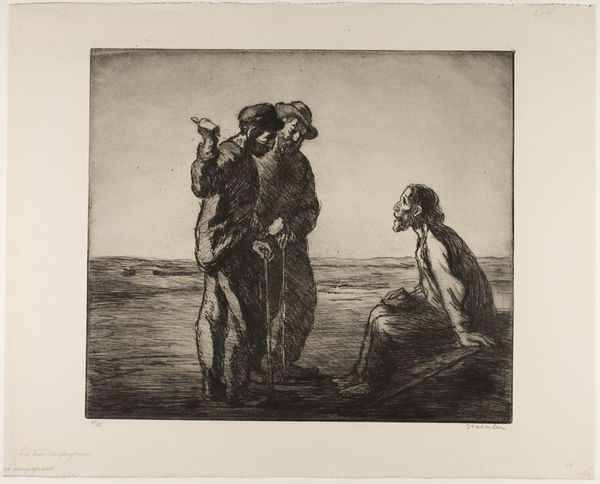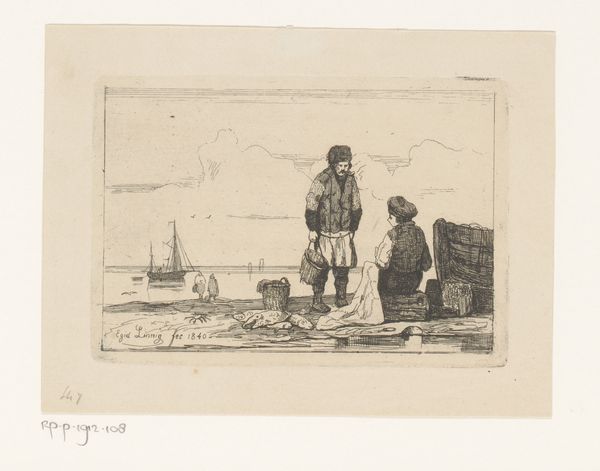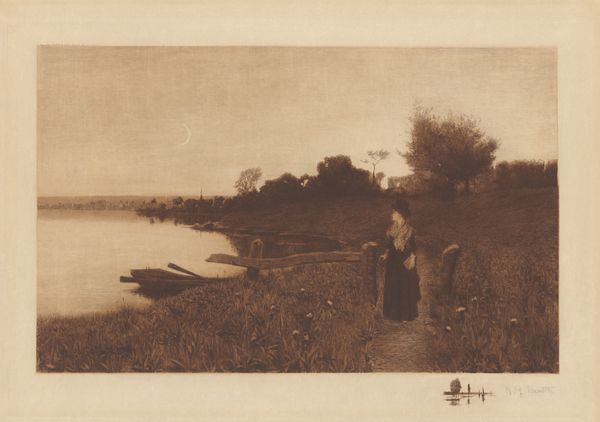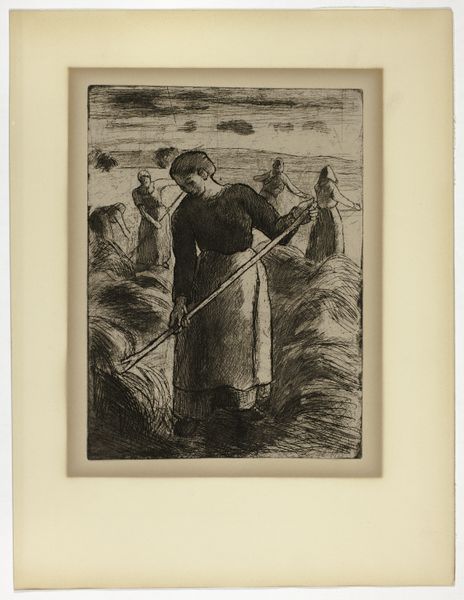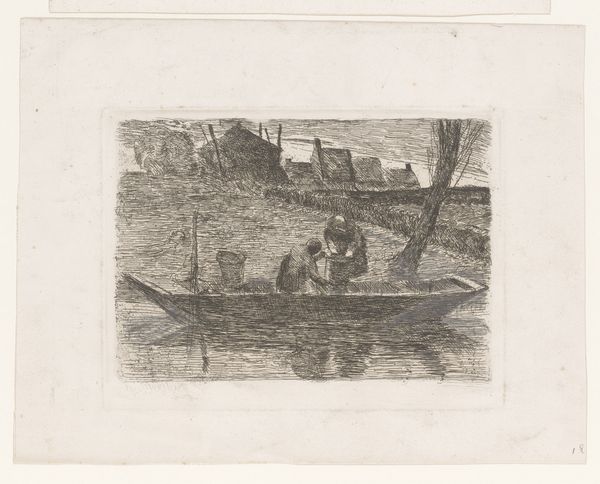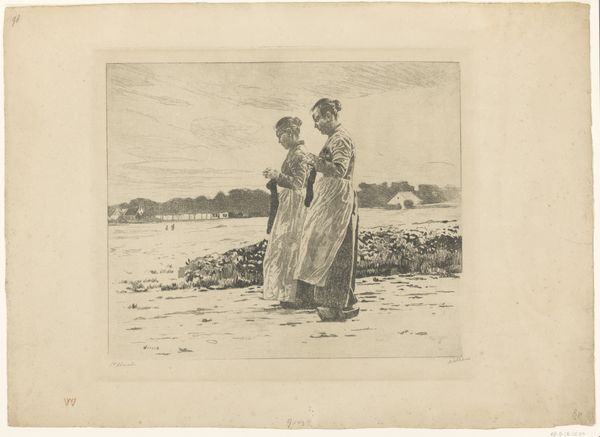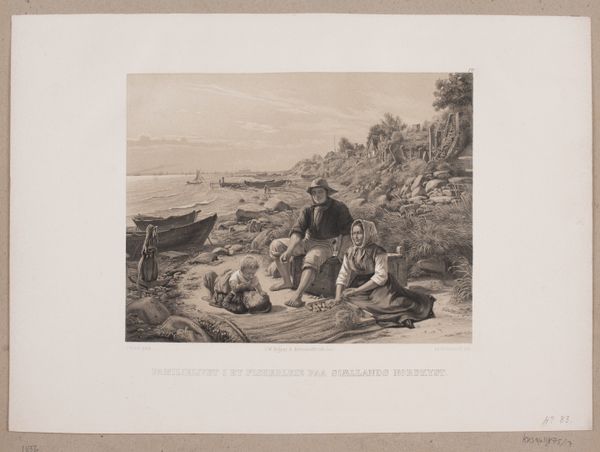
The Washerwomen c. 19th century
Copyright: CC0 1.0
Curator: At the Harvard Art Museums we see Benjamin Damman’s "The Washerwomen." Immediately, I’m struck by a somber mood. The limited palette feels very heavy. Editor: Absolutely. Notice how Damman uses closely valued tones to create a sense of enclosure and fatigue. The overall effect is quite melancholic. Curator: The figures resonate with archetypal images of labor. Washerwomen often symbolize both purity and hardship, connected to the life-giving power of water, but also its relentless demands. Editor: The composition, too, reinforces this. The women are cropped, almost trapped, by the horizon line, emphasized by the reflection in the water, with a very shallow depth of field, thus emphasizing their burden. Curator: It evokes a timeless narrative of women's work, a scene repeated across generations, each carrying the weight of the past. Editor: Indeed, through such careful arrangements of tone and form, Damman transcends mere representation, offering us a meditation on the enduring human condition. Curator: Reflecting on Damman's work, the continuity of these symbolic echoes is undeniable. Editor: For me, it's the formal mastery, the delicate balance between light and shadow, that elevates this simple scene into something truly poignant.
Comments
No comments
Be the first to comment and join the conversation on the ultimate creative platform.

